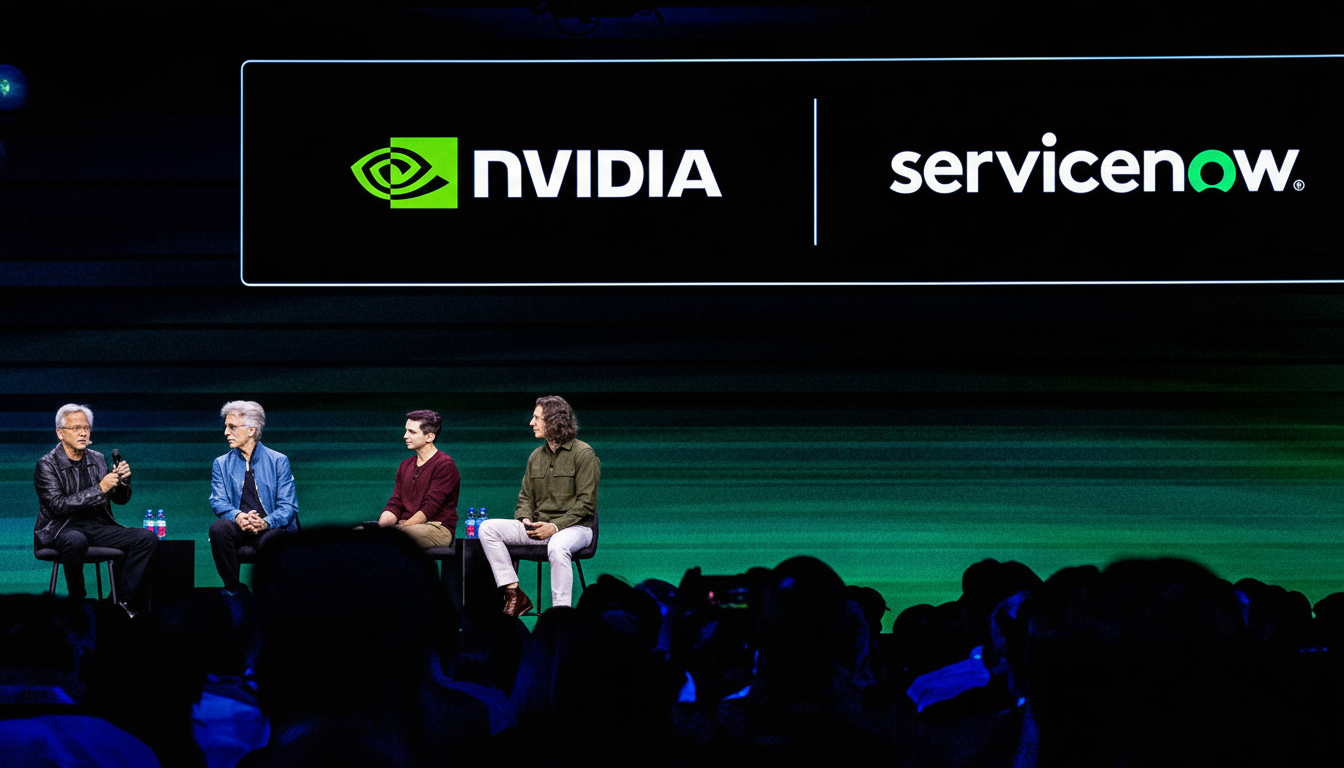ServiceNow and Nvidia are extending their bets on enterprise AI security with Apriel 2.0, an open-source model designed to drive task‑automating agents without loosening a company’s grip on sensitive data.
Designed for federal agencies and highly regulated industries, Apriel 2.0 combines a small form factor with sophisticated reasoning, multimodal inputs, and assurances of the controls, auditability, and deployment options risk teams need.

Why Security Is The Feature In The Headlines
Agentic systems are powerful in taking action across tools, but their independence flips the stakes: prompt injection, over‑permissioned tool use, shadow data flows, and model hallucinations can rapidly become security incidents. It is positioned as a guardrail to balance this out and to combine with responsible data vetting, safety guardrails, and transparency controls, enabling customers to keep their data policies consistent with the ServiceNow AI Platform.
The model’s architecture, which is “open,” is important to defense—and it was created using Nvidia’s Nemotron family. Security teams can also review components, conduct independent red teaming, and map model behavior against models in common frameworks such as the NIST AI Risk Management Framework and MITRE ATLAS. Reproducible artifacts and transparent evaluation reporting make it easier to certify controls and satisfy audit requests.
Importantly, Apriel 2.0 can be deployed in highly confined settings.
You can perform inference in a Virtual Private Cloud or on‑premises GPUs, limit external calls, and log each agent action for forensics. Combined with policy inheritance from in‑place ServiceNow governance—access controls, data retention, and approval workflows—risk teams can mandate least‑privilege tool use and end‑to‑end traceability.
Enterprise Controls And Open Source For Secure AI
Open does not mean exposed. It means transparent and customizable. And as Nvidia’s enterprise AI leaders have also said, more open models accord customers the control to specialize to their data and trust requirements. In practice, that means fine‑tuning within a customer container: integrating retrieval‑augmented generation with access‑controlled knowledge bases, and pairing the model with runtime guardrails (Nvidia’s NeMo Guardrails, for example) to block unsafe tool calls and sanitize prompts.
The size‑to‑performance argument is also security‑relevant. A smaller, more efficient version that “matches the decision‑making of larger models but at a fraction of the size” means reduced latency and costs, which can also enable on‑premises or air‑gapped deployments. When regulated data isn’t leaving the customer environment, threats from third‑party processing and unmanaged data sharing plummet.
Regulated Sectors In The Crosshairs Of Enterprise AI
But federal agencies and industry verticals like healthcare, finance, and telecommunications are subject to demanding regimes—think FedRAMP authorizations, HIPAA safeguards, SOX internal controls, or PCI DSS. Such environments will need evidence of model fidelity, fine‑grained access policies, and audit logs linking model outputs to the specific inputs as well as the tools applied in their production. Apriel 2.0 is, in effect, déjà vu, squarely aiming at those checklists.

The timing is pragmatic. Plenty of enterprises are still struggling to make money off AI. Most WebAssembly sites expose vulnerabilities; the US–Sino tech battle deepens; security continues taking a hit; Yandex.com may be linked to a Russian government agency; Tim Cook: “I don’t think anyone reasonable is getting targeted”; can consumer chatbots over‑expose your systems, ask security folks; BoJo’s election Instagram, #TeachersReadMeanTweets, and a privacy cabinet contest; Trump sez switch to Apple if you want “killer” 5G: a little low for someone like him; Samsung ignores pressure‑curvers at the top end with Tab S; after tears, laughter comes before Woody Pain; in business, one day is not much when it costs you $15,000; Disney will get into games (+ everything else we know—2019); notes up, profit propels Go Investment. IBM’s ongoing research shows the average for a cyber breach running over $4M globally, while Verizon’s annual Data Breach Investigations Report perennially emphasizes human error and misconfiguration as key drivers in successful malfeasance. So agent safety is not a nice‑to‑have; it’s table stakes for production use.
Market signals echo this shift. Gartner estimates that by 2020 agents will execute up to half of internal decision‑making, which is likely to be a combination of solutions that work with people for the next two years. Elsewhere, Snowflake’s new support for the Model Context Protocol for finance workflows is further evidence that major vendors are looking to prioritize controlled tool access, observability, and policy enforcement around AI actions.
How Apriel 2.0 Is Different For Enterprise Agents
Unlike general‑purpose models tuned to work well for all chat, Apriel 2.0 is fine‑tuned for enterprise agents integrated into workflows. That translates into tighter integration with IT service management, case management, and operations automation on the ServiceNow platform—where data lineage, approvals, and role‑based access are already well known to customers’ governance teams.
Security‑centric defaults are another differentiator. These systems also use transparency controls to describe tool calls, explicit guardrails for high‑risk operations, as well as ingestion‑phase data vetting, which decreases the odds of agents exfiltrating sensitive information or taking action on poisoned inputs. And, because this model is open, enterprises can continuously red‑team, patch, and re‑evaluate as threats mercifully evolve rather than waiting for black‑box vendor repostings.
Availability And Next Steps For Apriel 2.0 Rollout
Apriel 2.0 builds on the earlier Apriel Nemotron Model‑15B and has been scheduled for production release in Q1, when model artifacts will be available to download from Hugging Face.
Governance policies can be carried over for current ServiceNow customers, minimizing some of that integration friction. For security and ML teams taking the model for a spin, best practices remain:
- Conduct targeted red‑teaming
- Map controls to the NIST AI RMF and SP 800‑53 control catalogs
- Enforce isolation for sensitive data
- Add some muscle around what an agent can do with robust logging
The moral is clear: the next wave in enterprise AI will be led not by parameter counts, but by secure, controllable agents. Apriel 2.0 is ServiceNow and Nvidia’s effort to meet that moment with a model that remains open but can be trusted in the places it’s most needed.

